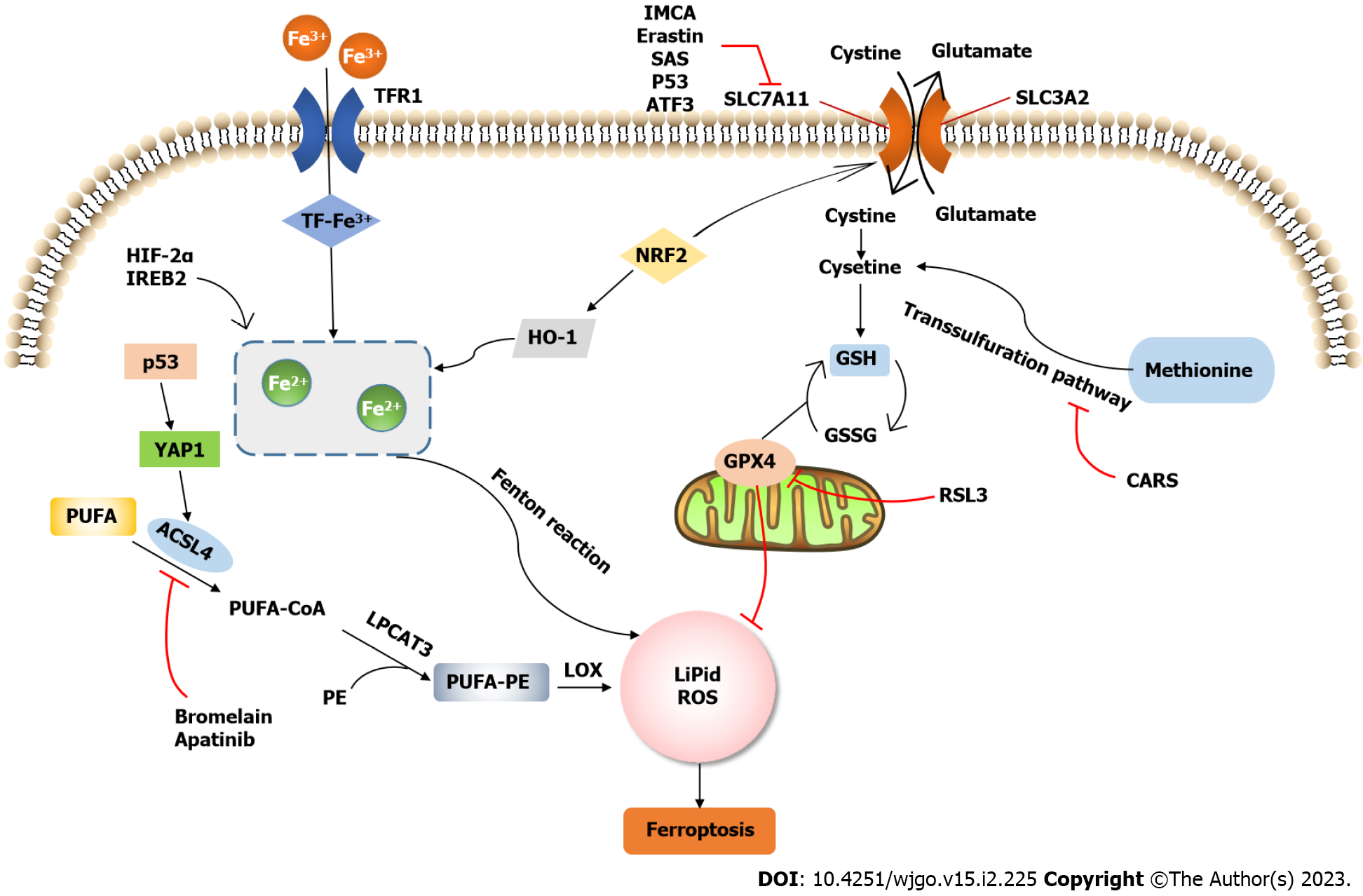Copyright
©The Author(s) 2023.
World J Gastrointest Oncol. Feb 15, 2023; 15(2): 225-239
Published online Feb 15, 2023. doi: 10.4251/wjgo.v15.i2.225
Published online Feb 15, 2023. doi: 10.4251/wjgo.v15.i2.225
Figure 1 Mechanisms of ferroptosis in colorectal cancer.
The diagram shows several potential regulatory pathways for ferroptosis. Including Xc-system, lipid peroxide accumulation, sulfur transfer pathway, glutathione/glutathione peroxidase 4 lipid repair system, Nrf2-H0-1, cellular iron homeostasis, p53, etc. TFR1: Transferrin receptor 1; TF: Transferrin; IREB2: Iron response element-binding protein 2; PUFA: Polyunsaturated fatty acid; ACSL4: Acyl-CoA synthetase long-chain family member 4; LPCAT3: Lysophosphatidylcholine acyltransferase 3; PE: Phosphatidylethanolamine; LOX: Lipoxygenase; NRF2: Nuclear factor erythroid 2-related factor; HO-1: Haem oxygenase 1; SLC7A11: Solute carrier family 7 member 11; IMCA: Benzopyran derivative 2-imino-6-methoxy-2H-chromene-3-carbothioamide; SAS: Sulphasalazine; GSH: Glutathione; GSSG: Oxidized glutathione; GPX4: Glutathione peroxidase 4; RSL3: Ras-selective lethal 3; CARS: Cysteinyl-tRNA synthetase; ATF3: Activating transcription factor 3; YAP1: Yes-associated protein 1.
- Citation: Song YQ, Yan XD, Wang Y, Wang ZZ, Mao XL, Ye LP, Li SW. Role of ferroptosis in colorectal cancer. World J Gastrointest Oncol 2023; 15(2): 225-239
- URL: https://www.wjgnet.com/1948-5204/full/v15/i2/225.htm
- DOI: https://dx.doi.org/10.4251/wjgo.v15.i2.225









